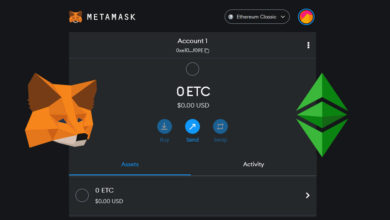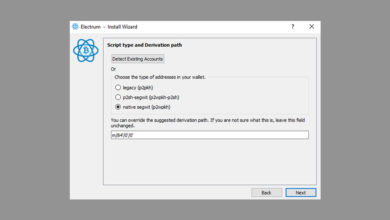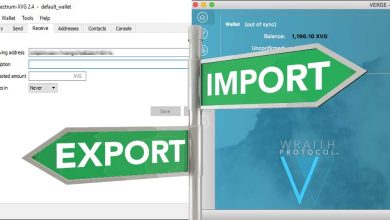How to backup Ledger Hardware Wallet – Backup Nano S / Nano X device
Most users who setup their cryptocurrency wallet for the first time are not aware about wallet backups. They simply setup the wallet, send funds and start using it without doing a proper backup or knowing what to do with the mnemonic seed words.
When it comes to wallet taking a backup is the most essential step and you need to take backup before sending any funds to your wallet. This applies to all wallets and not just one specific type. It can be a software wallet, online wallet or hardware wallet. Previously we’ve explained how to backup Bitcoin core wallet. Here is a guide to backup electrum wallet and we’ve made many similar wallet backup guides.
Likewise here in this beginners guide we’re going to cover how to backup Ledger Nano S and Nano X hardware wallets.
Why to backup hardware wallet?
Due to their ease of use and security, hardware wallets are largely used and it is the most recommended wallet type. Since it is a cold storage many users only use their hardware device as a long term cryptocurrency storage solution and not on a day to day basis. After the wallet setup is done, they take backup, send funds and forget. But what’s extremely important is how accurate the mnemonic seed backup is and how securely it is kept which is often a neglected step.
Taking a proper backup of your recovery seed and securing it is more important that your device itself. If your Ledger hardware wallet accidentally breaks or if you lose the device then you need the backup phrase to recover your funds.
How backup works?
The backup is usually the 24 random words which is the standard for both Ledger and Trezor devices. The 24 word phrase will be generated by the device when you setup the Ledger device initially. This 24 words will give access to your funds anytime even if you lose or break your wallet. So take a proper backup and mainly ensure the mnemonic seed backup is accurate. The seed is the master private key to unlocking and recovering all your cryptocurrency on the device.
The backup phrase is securely stored on your device and no attack vectors can extract this information from your device. However the information can be stolen from you if you are careless about it. So it Is extremely important that you save the seed word somewhere safe where they aren’t at an increased risk of being stolen. Also it is highly recommended that you never store this information on an electronic device such as your computer or phone (including taking photos).
Alright! Let’s now see how to backup your Ledger Nano S and Ledger Nano X hardware wallets.
How to backup Ledger Nano S / X?
The following guide is for those who are setting up their hardware wallet for the first time. Particularly those who are setting up Ledger Nano S and Nano X hardware devices.
If you’ve already setup the wallet then most probably you have the backup phrase saved somewhere safe. In this case be sure to check your mnemonic seed backup. Here is a guide to perform Ledger backup recovery check.
Install the recovery check app on your Ledger device and perform the recovery check. If you have the recovery seed backup saved properly then you should be able to successfully verify. If you’re able to successfully verify your Ledger wallet’s recovery seed then congrats. Keep it safely and continue using the wallet.
Only use the wallet if you can successfully verify the backup. In case if the recovery check fails then it means the recovery seed which you’ve written down is incorrect. In this case we suggest you to send your funds to your desktop wallet or mobile wallet temporarily. Then follow this guide to make a new safe and secure wallet.
Backup Ledger device
We are assuming that you are setting up your Ledger device for the first time. Here we’re going to use the Ledger Nano S but the backup process is pretty much the same for Nano X and other ledger devices.
To save / backup your Ledger / Trezor or any other hardware wallets all you need to do is simply write down the 24 word seed phrase shown on the device. Write them down on the card they’ve provided and keep it safely. Never ever reveal the seed to anyone and never save it online, on your computer or on your mobile phone. Only keep an offline backup.
Step 1: Backing up the Ledger wallet:
Start by plugging in your Ledger device to your PC or Mac. Once plugged in you’ll see a welcome message stating “Welcome to Ledger Nano”. Use the buttons to navigate and press both the buttons to validate.
Press the right hand button to navigate and double press buttons to setup as a new device. You’re now configuring a new device. Ledger will now ask you to choose a PIN code. Press both the buttons and setup a PIN code.
The PIN can be up to 8 numbers long. Please note that when choosing a PIN make sure the pin is atleast 6 to 8 digits long and is significantly harder to guess. Once you’ve set the PIN, confirm the PIN code by re-entering the PIN again.
Once the PIN is confirmed Ledger device will start displaying a series of 24 words. This is your recovery phrase which is also known as mnemonic phrase. Cycle through each word one by one using the navigation button and note them down carefully. The order is very important.
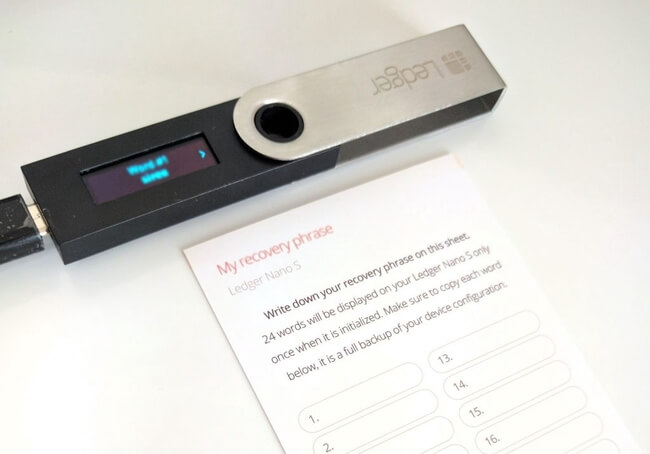
Step 2: Writing down the recovery phrase
Note: The recovery seed is randomly generated by your wallet and it will be displayed only on your device (not on computer screen) for security purpose.
The recovery sheet that came with your device should be blank. If it has a recovery seed already written then the package has been tampered with. If that is the case the do not use the wallet. Contact Ledger support.
The recovery seed displayed on the Ledger device must be generated by you and it should be written down only by you. Also as we said the order is more important. So write it down neatly, clearly and accurately as it is shown on the device.
You should only write the recovery seed on a piece of paper or on the recovery sheet. Not on your phone notes app, computer notepad, Microsoft word or on any other websites. Keeping this information online or saving it digitally is highly risky and is not a good security practice. Only backup your recovery seed offline.
Once you’ve written all the 24 words proceed to confirm your backup.
Step 3: Confirming Backup
Cycle through each word one by one using the navigation button until you see the right one. Enter each word in correct order by pressing both the buttons.
Repeat the process for all the 24 words. Once the backup confirmation is complete your Ledger device displays as “your device is now ready”. It means your backup is correct, the configuration process is complete and you can now start using the wallet.
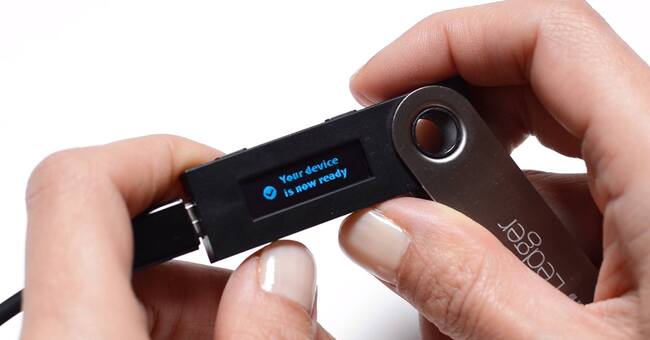
Now that you have the backup phrase written down hide it somewhere safely where it is not likely to be found by someone.
Step 4: Securing the recovery sheet
Warning: Never ever reveal the 24 word recovery phrase anywhere or to anyone. If someone gets to know this then they can take all your coins. With the recovery phrase anyone can use any compatible wallet and gain access to your coins.
Ledger uses BIP39 standard to generate mnemonic seed phrase. Trezor also uses the same standard so one can import Ledger backup on Trezor and vice versa. Not only hardware wallets but there are many software wallets supporting BIP39 standards. To learn more take a look at the list of BIP39 wallets where we’ve also explained how how mnemonic seeds work.
The backup process is standardized so you don’t have to rely on Ledger completely. If Ledger breaks, you can use Trezor to recover your funds or any other alternative BIP39 software wallets.
That’s all! You’ve successfully backed up your Ledger wallet. Remember that this 24 words are your only backup so store the backup paper safely where nobody can access it.
Set up a backup device
In addition to your current hardware device you can also setup a backup device so that you can manage your accounts on both the devices. A backup device not only increases your wallet security but it also brings in convenience.
To create a backup device just import the 24 word recovery phrase on the the second device. This will import all your private keys giving access to all your crypto assets.
It doesn’t need to be the same device. For example If your main device is Ledger Nano S, then for backup you can use Ledger Nano X. You can also use Trezor One or Trezor model T as backup or any other hardware wallets that support the BIP39 mnemonic standard.
By setting up a backup device you don’t have to worry about your main wallet getting stolen or broken. Because your have a backup wallet which you can use to access your crypto assets anytime.
By having a secondary wallet you can quickly access and manage your funds in case of loss, theft or damage to your main device. Just remember to store the backup device on a different location so that you can mitigate all sorts of threats.
Hope you’ve realized the importance of wallet backup and we hope you safely backed up your Ledger device.

